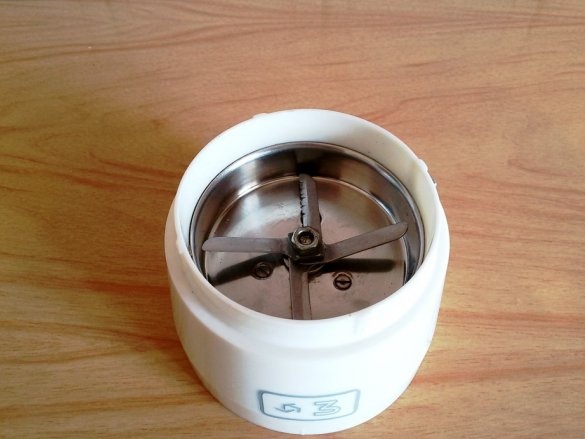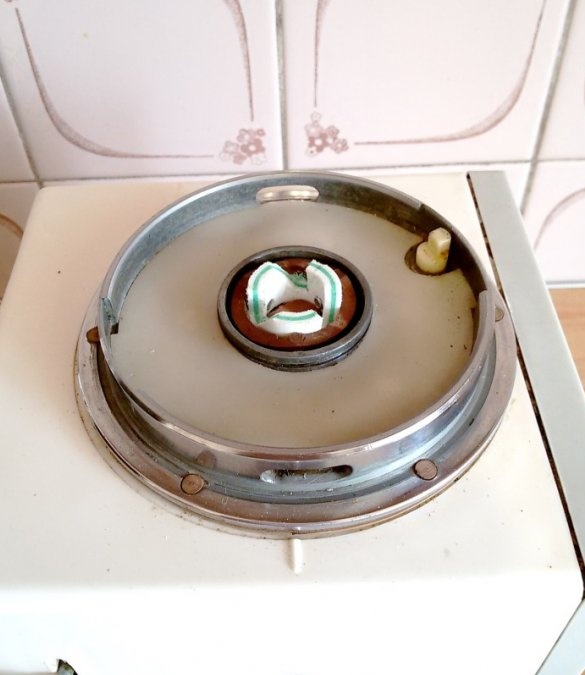
A married woman advises her friend:
“Never marry a craftsman man!” ()
"Why?"
“There will never be New things in your house ...”
I recall this story when you have to bring back to life the necessary and easy-to-use things. So it happened in this story. As a result, the new food processor was left to wait in the store for another buyer.
The kitchen machine, which accidentally appeared in the house during the time of general shortage (someone else can remember those times), has served without fail until now. True, she worked with some problems. One of them is noise, approximately at the level of a vacuum cleaner. And after receiving the juice from the berries (especially viburnum, with its small branches), it was necessary to wash half the kitchen - this was how structural seals were made in the juicer. But otherwise, the car can only please. The drive has a powerful engine. The machine comes with about a dozen different quick-detachable devices. Some nozzles are switched on via a gearbox integrated in the side drive. The kitchen machine has a drive speed selection. As a result, the universal machine performs without hindrance all the operations laid down and is a kind of “workhorse”.
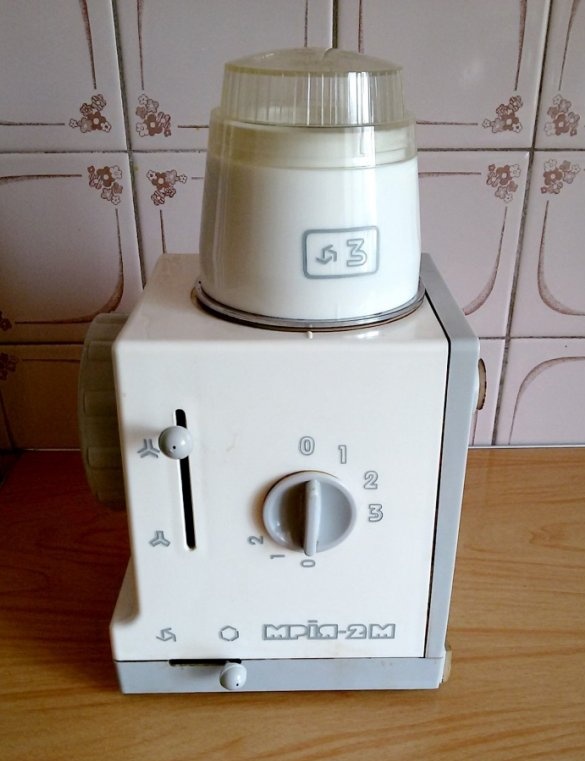
Everything went fine until the process stopped when grinding the dry fibrous roots of medicinal plants in a coffee grinder. At the autopsy, it turned out that the drive coupling half, made of solid cast rubber, was left without hooks.
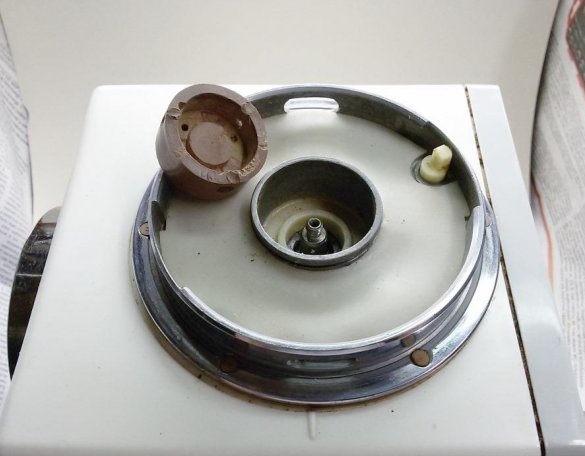
They were cut, more durable plastic hooks of the driven coupling half mounted on the coffee grinder. The causes of the accident turned out to be the low strength of the half-coupling material, the aging of the material due to age and the significant strength of the raw materials processed in the nozzle.
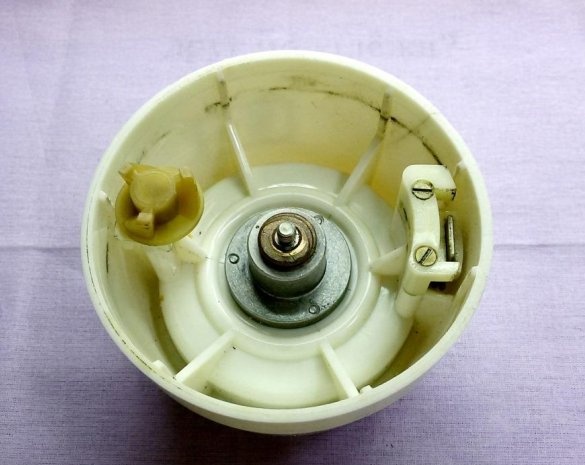
After the accident, I went to look for a replacement for this part. But bypassing all the well-known spare parts stores for household appliances in the city, I did not find such half-couplings - they have not been released for this model for a long time. There were also no similar parts in design, individually or in a set, which could possibly be included in the structure, after partial refinement.
On the upper high-speed drive of the kitchen machine, where the worn half-coupling works, most of the nozzles are installed. Therefore, the failure of one of this parts practically “kills” the possibility of the entire machine working.The purchase of a new food processor with such capabilities today requires a serious salary (1.5 salaries of an ordinary factory worker were enough to buy the described machine). Perhaps the new machine will be more accurate, but for how long? Today, household appliances have not lived for so long - it is not commercially profitable for manufacturers.
The conclusion is obvious, you need to look for a way to revive the existing kitchen machine, to make for it yourself a new leading coupling half.
If a similar situation happened in your home, consider a worthy way out of it.
Coupling manufacture
1. Part Material
As a material for the part, it is advisable to use medium density plastic. Such a half-coupling will dampen vibrations, reduce noise during operation and more quickly work in tandem with the counterpart of the coupling.
2. Clutch blank preparation.
The leading coupling half mounted on the emergency vehicle was made of dense rubber. It has the shape of a glass, with an M6 installation nut embedded in the bottom and reinforced with a thin metal ring along the side wall to increase rigidity and increase the transmitted moment. We use this part in the work, having previously removed the remnants of the hooks previously located inside the coupling half at the side wall, from the bottom to the height of the part. The resulting billet will have a wall height of 9 mm and an inner wall diameter of 25 ... 26 mm.

3. The manufacture of the working part of the coupling.
A plastic plumbing pipe with an outer diameter of 25.5 mm is well installed in the resulting internal size of the preform of the coupling half. Its material is also suitable for the manufacture of the working part of the coupling. If possible, for our case, a pipe with a larger wall thickness (4.5 mm versus 3.5 mm), and therefore greater strength, is better suited.

We cut off a 12 mm ring from the pipe.
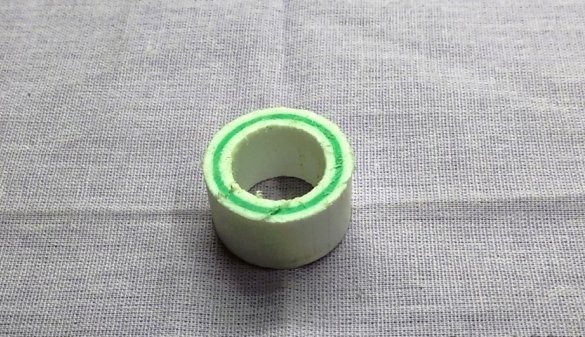
We install a pipe segment in the coupling blank, press it to the bottom of the blank. Divide the circle along the outer diameter of the workpiece into 3 parts and radially drill three holes with a diameter of 3.2 mm through both parts. Without disconnecting the parts, we cut the M4 thread in the holes, apply chamfers under the screw heads from the outside to the workpiece. We note the risk of the relative position of the parts, we disassemble the parts.
Having arranged coaxially (on the outer diameter), we press the end face of the working part ring to the tops of the driven coupling half. Pre-mark the location and inclination of the grooves in the ring. The grooves will be located between the holes made.
Observing caution and safety regulations, using a knife or an affordable machining method, we begin the manufacture of grooves for marking.

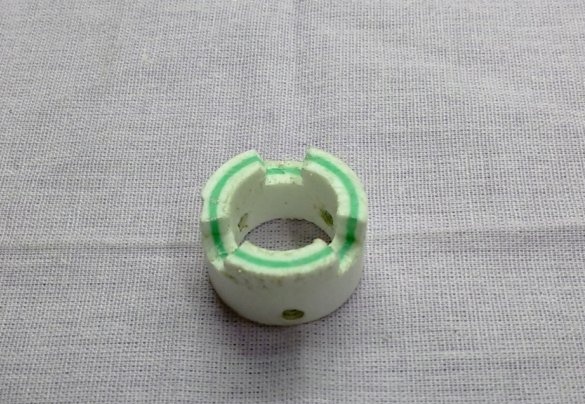
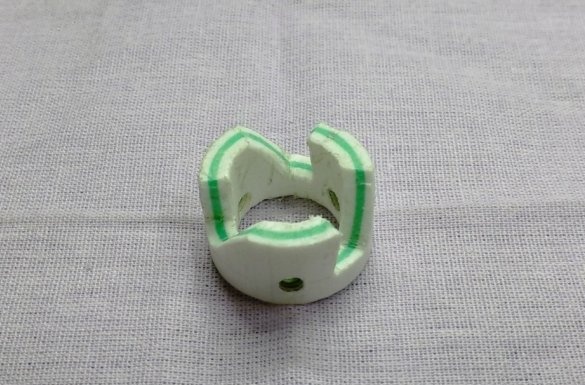
Connecting the parts and observing their alignment, we periodically check and refine the groove contour in the ring of the working part according to the driven coupling half, as according to the template. We achieve the most tight fit of the working faces of the parts.
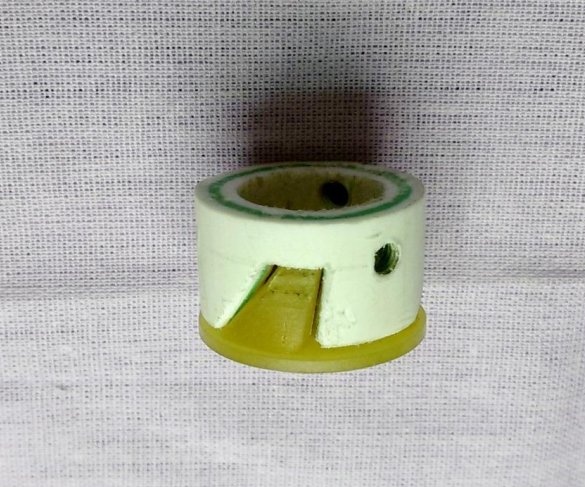
Using the countersunk head screws, we assemble the working part ring with the workpiece into a single driving coupling half.

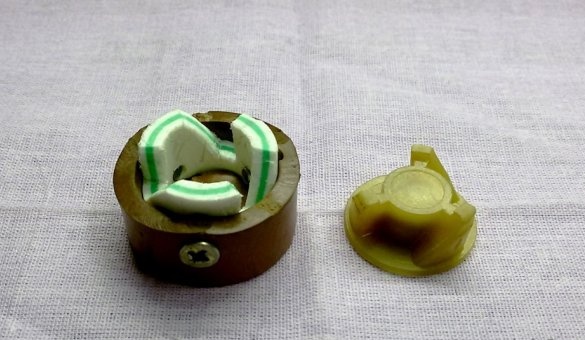
We install the assembled coupling half on the axis of the drive of the kitchen machine, assemble it with the appropriate nozzle and test the machine in operation.
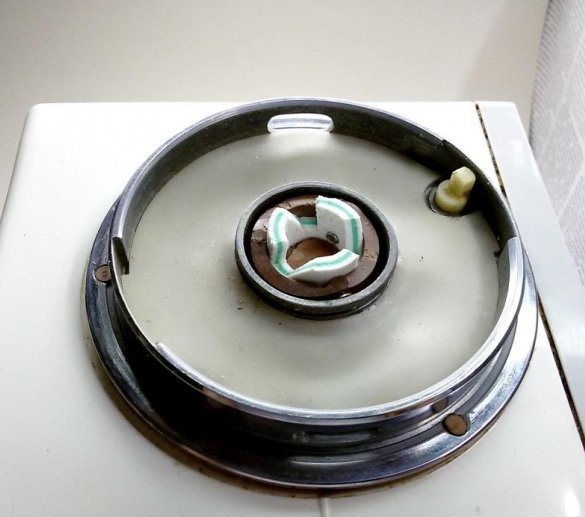
In this case, the tests were successful, the work begun on the treatment of the roots of medicinal plants, successfully completed, no additional vibration or noise was noted. The kitchen machine is ready for new challenges.
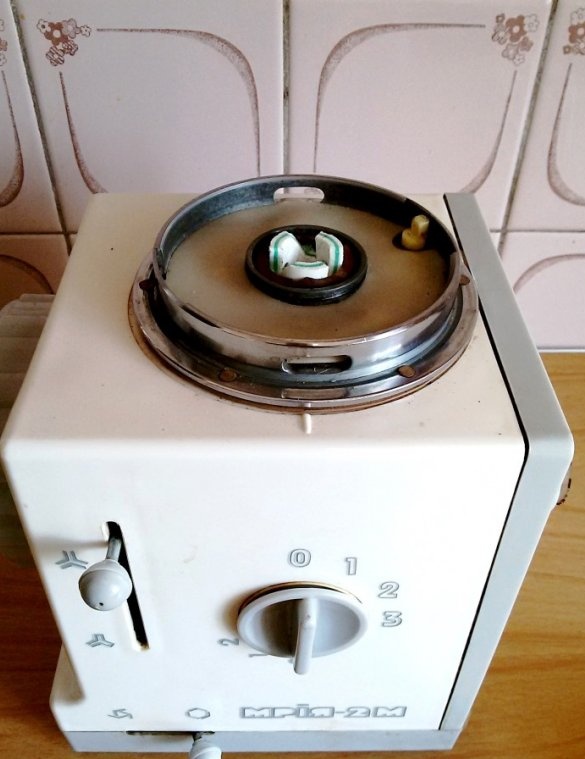
A little bit about finalizing the design of the knives of the coffee grinder. A regular hardened knife broke relatively quickly along a narrow bridge at the mounting center hole.
Using a broken knife as a template, you can make two new knives with some modifications.
1. Use stainless steel as the material for the knives. It has sufficient strength and corrosion resistance.
2. We will slightly increase the central part of the knife, the width of the knife near the hole to increase its strength.
3. The mounting location for the knives on the drive shaft of the coffee grinder has the shape of a cylinder with two parallel flats. The hole in the knife has an appropriate shape to prevent turning the knife. The location of the flats in the holes on the two manufactured knives should be different. They must be rotated 90 degrees relative to each other. This makes it possible, when assembling, to arrange the knives with a cross. It is advisable to bend the cutting plates of the upper knife slightly upwards. These changes increase the productivity of the product grinding operation.
4. Vibrations during operation of the coffee grinder often contribute to loosening the cap nut securing the knife. To exclude the self-disassembling of the coffee grinder design during operation, it is necessary to replace the standard nut with a simple one and install a second additional part - a counter nut.


